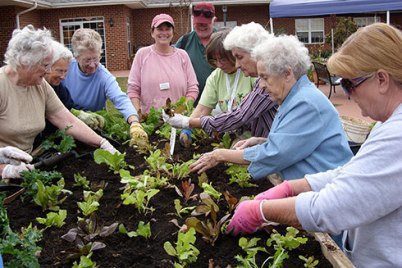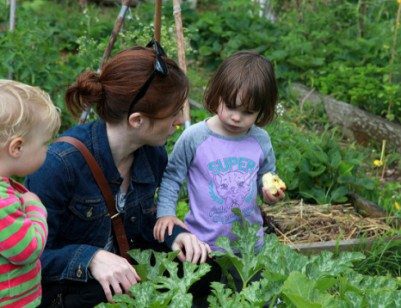With each passing month, a new indoor gardening gizmo or system leaps into existence, a vacant lot or rooftop farm is born, or an indoor agriculture operation starts its inaugural hydroponic crop. One might wonder what will become of community gardens with all the personal agriculture options out there today, along with food banks, soup kitchens, and charities joining the commercial urban farms in growing food in an environment that give complete control of the harvest.
 While technology has made growing an abundance of local food more possible than in the past, it’s unlikely it will displace community gardens. In fact, new garden spaces for the community’s use are created at a much faster pace than high-tech innovations and urban farms combined. And it’s a phenomenon that’s taking place everywhere, not just in big cities.
While technology has made growing an abundance of local food more possible than in the past, it’s unlikely it will displace community gardens. In fact, new garden spaces for the community’s use are created at a much faster pace than high-tech innovations and urban farms combined. And it’s a phenomenon that’s taking place everywhere, not just in big cities.
When urban gardening was born back in the 1890s, it’s purpose was to feed the poor during an extreme economic downturn, and many community gardens exist for the same reason today. But not all of them. Many times there is a market garden and rental plots in one space, which is great because there is not enough locally grown produce to go around. But that’s not what draws people to become volunteer gardeners, or to pay an annual fee to grow a few vegetables on a tiny plot.
Community gardens grow a lot more than food
Be it for the hungry or the home, and offers something no advancements in technology can replace. They grow a community, foster inclusion, and create a sense of place for the people living in the neighborhood or area. This, says Karin La Greca of Fresh Roots Farm (Mahwah, NJ), is what brings volunteers to work the soil. It’s not their share of the harvest.
 The rise in gardens for the community is directly related to urban farming – be it indoor or outdoor agriculture. The existence of both is inspired by each other. The more urban farms there are, the more community garden installations will spring up with them. Instead of having fresh, locally grown food available from a curbside stand detracting from the desire to grow your own, they encourage people to get involved in growing – for themselves and those in need.
The rise in gardens for the community is directly related to urban farming – be it indoor or outdoor agriculture. The existence of both is inspired by each other. The more urban farms there are, the more community garden installations will spring up with them. Instead of having fresh, locally grown food available from a curbside stand detracting from the desire to grow your own, they encourage people to get involved in growing – for themselves and those in need.
Urban farms also bring local residents to want to know more about how food is grown, and once armed with a little education, they will want to try growing their own. In the urban environment, many times the only place they can do so beyond a pot on the balcony or fire escape is on a rented plot. And the involvement in gardening with their community like this often leads to the transition from personal grower to urban farmer.
While the harvest from a community garden isn’t an abundance one can survive on, it gives everyone from school children to adults a fresh perspective on the way food should really taste, and the realization that anyone can produce food. It also brings about the awareness that agriculture doesn’t require complex equipment or need to take place in some distant unseen location. And last, but certainly not least, community gardens allow city dwellers to revive their connection with nature.
 Technology is wonderful, and high-tech farming may make feeding urban populations more sustainably possible, but it’s missing food for the soul… the sense of place, the community involvement, the beauty of the soil and songbirds and butterflies.
Technology is wonderful, and high-tech farming may make feeding urban populations more sustainably possible, but it’s missing food for the soul… the sense of place, the community involvement, the beauty of the soil and songbirds and butterflies.
Source: CityLab
Images courtesy of Jeff Gissing, Move for Hunger, DNA Info, and d-olwen-dee (respectively).